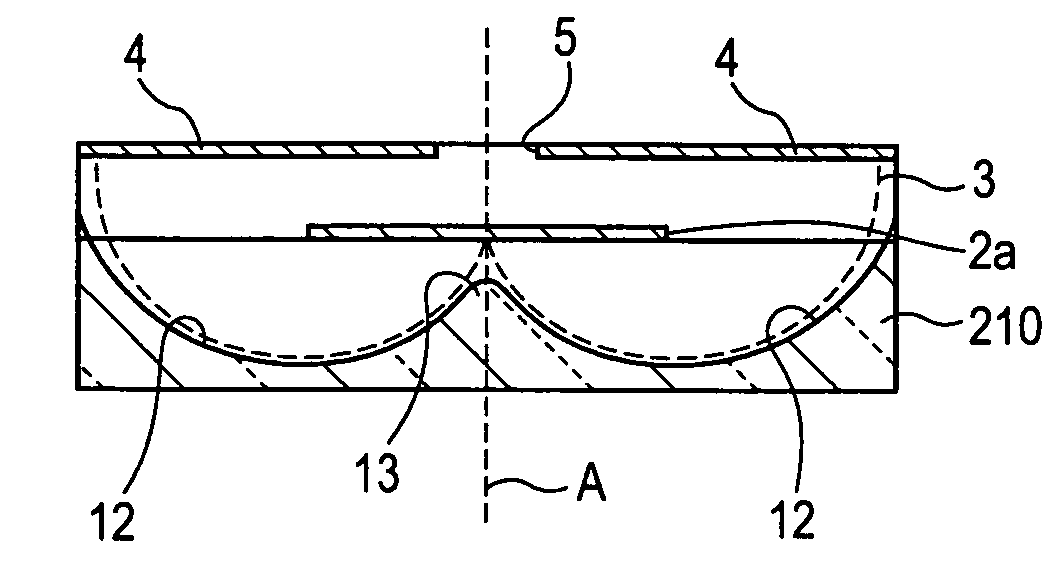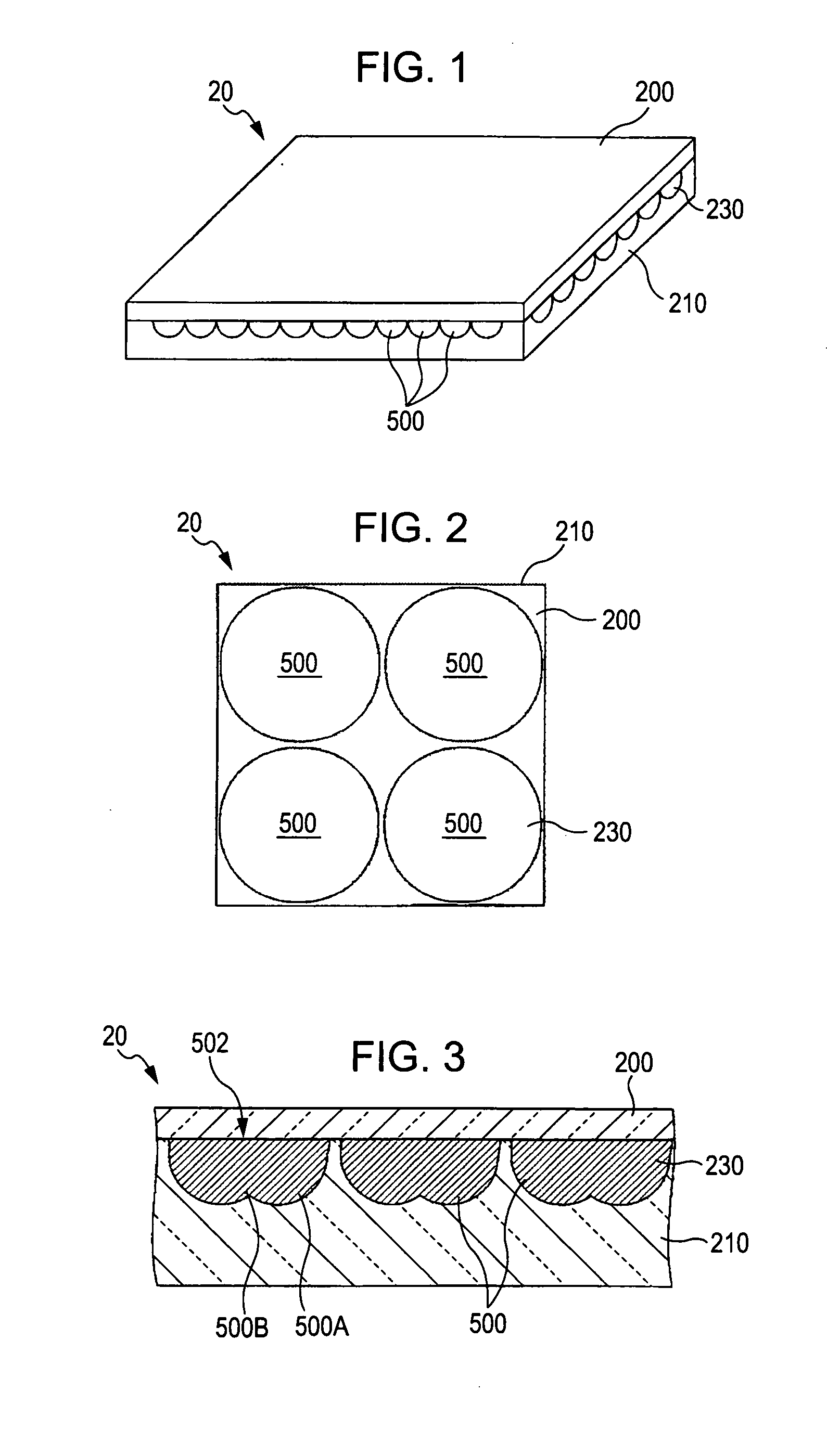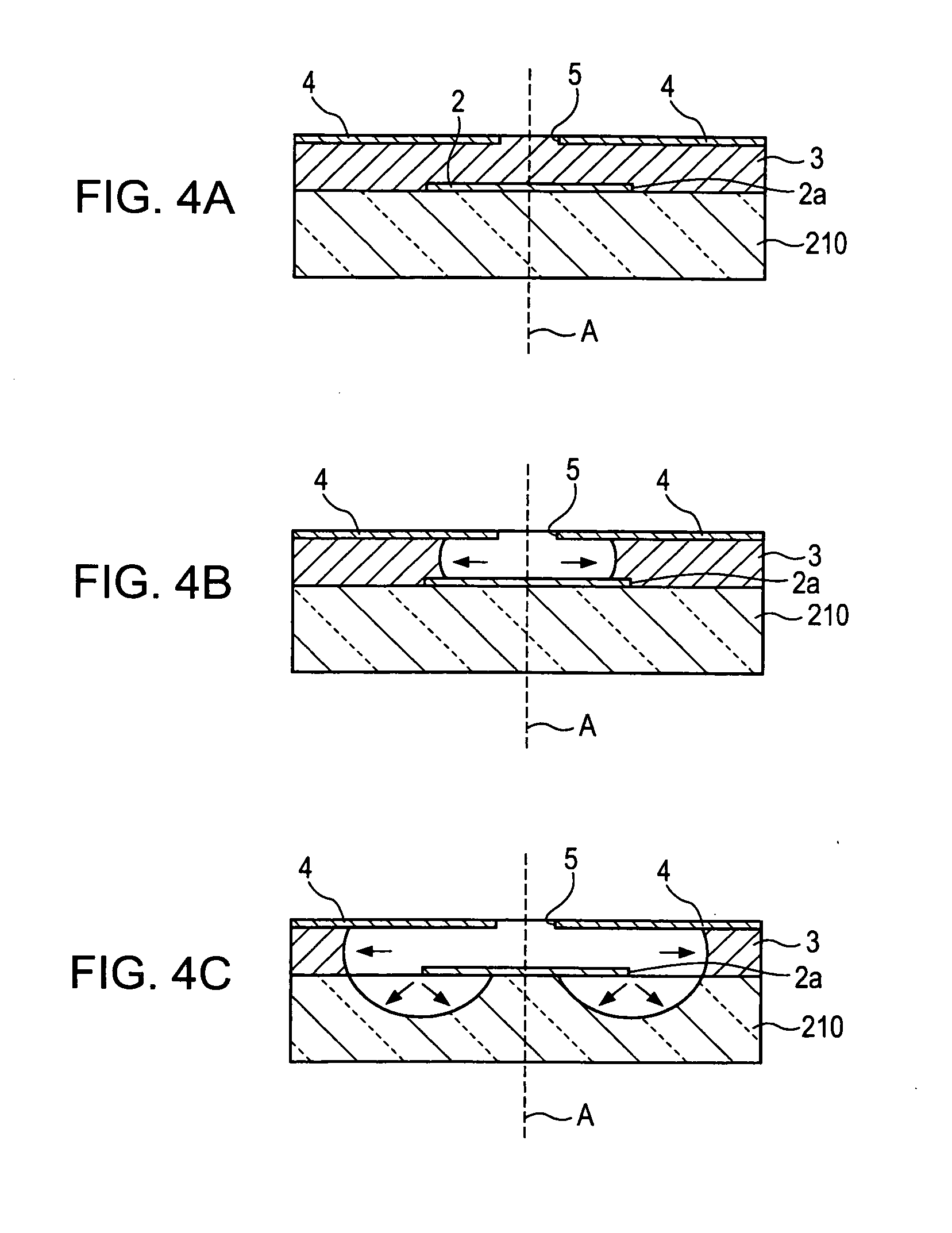[0009] An
advantage of the invention is that it provides a method of manufacturing a microlens capable of suppressing a reduction of the lifetime of a liquid
crystal device or the like due to light focused on one point without sacrificing display performance, such as luminance and contrast, and it provides the microlens, a microlens array, an electro-optical device, and an electronic apparatus.
[0010] According to an aspect of the invention, a method of manufacturing a microlens includes: forming on a transparent substrate an etching stop layer in a lens formation region where a curved lens surface of the microlens is to be formed, the etching stop layer having an island shape as a planar shape thereof; forming an intermediate layer on the etching stop layer; forming an etching
mask layer on the intermediate layer, the etching
mask layer having an opening at a position facing the etching stop layer; and etching, by means of
isotropic etching, the intermediate layer from the opening, and etching the transparent substrate and the intermediate layer from a side of the etching stop layer.
[0011] According to the method of manufacturing the microlens of the invention, an etching stop layer is first formed within a lens formation region on a transparent substrate, such as a
quartz substrate or a glass substrate. The etching stop layer has an island shape as a planar shape, on the transparent substrate, and for example, has a smaller size than a lens formation region when the microlens is finally formed through an etching process to be described later. Also, when curved lens surfaces of a plurality of microlens are formed on the transparent substrate, a plurality of etching stop
layers dotted in island shapes is formed to correspond to positions of the plurality of microlens which is finally formed.
[0012] Subsequently, an intermediate layer is formed on the etching stop layer. The intermediate layer is formed using a general-purpose film formation method such as a CVD method or a
sputtering method. Subsequently, an etching
mask layer formed with an opening is formed at a position facing the etching stop layer on the intermediate layer. For example, the etching
mask layer may be directly formed on the intermediate layer so as to avoid the position facing the etching stop layer. Also, the opening is formed, for example, by forming the etching mask layer so as to cover the entire intermediate layer and then removing a region including the position facing the etching stop layer. As such, after forming the etching stop layer, the intermediate layer, and the etching mask layer on the transparent substrate, the intermediate layer is etched from the opening by an
isotropic etching, and the transparent substrate is also etched together with the intermediate layer from a side of the etching stop layer. Specifically, the etching stop layer is exposed as the intermediate layer is etched outward from the opening, and the transparent substrate, which is exposed from a side of the etching stop layer by removing the intermediate layer, is etched to thereby keep etching the intermediate layer.
[0013] As a result, a curved lens surface having the specific shape is formed in the transparent substrate by means of the presence of the etching stop layer. Specifically, an etched surface propagating toward an inside of the etching stop layer from the side of the etching stop layer becomes in contact with a lower position of the etching stop layer to form a curved lens surface which is convex toward the etching stop layer. On the other hand, an etched surface propagating toward an outside of the etching stop layer forms a curved lens surface which is convex at a position opposite to the curved lens surface formed at the lower position of the etching stop layer. Since the transparent substrate is etched from the side of the etching stop layer and the lower position of the etched intermediate layer, the above-described curved lens surface constitutes one curved lens surface which is continuously connected in the lens formation region of the transparent substrate.
[0014] When the
resultant curved lens surface is filled with a resin having an optical transmitting property, a microlens can be formed in which a central portion is more pitted than the circumferential portion. Such a microlens can make both of the central portion of the lens, which is more pitted than circumference, and the circumferential portion around the central portion act as lenses. In addition, light emitted from the light source can be focused on the pixel region by means of the specific curved lens surface, while light can be properly dispersed so as not to make them focused on one point of the pixel region. Accordingly, deterioration of each part of the pixel region due to light focused on one point can be suppressed without sacrificing the
optical transmittance in the pixel region. By means of this, the orientation layer within the pixel region can be suppressed from being deteriorated, and a lifetime of the liquid
crystal device can increase. Moreover, the etched surface of the etched transparent substrate can be used as the curved lens surface for the microlens without filling the etched surface with a resin or the like.
 Login to View More
Login to View More  Login to View More
Login to View More 


